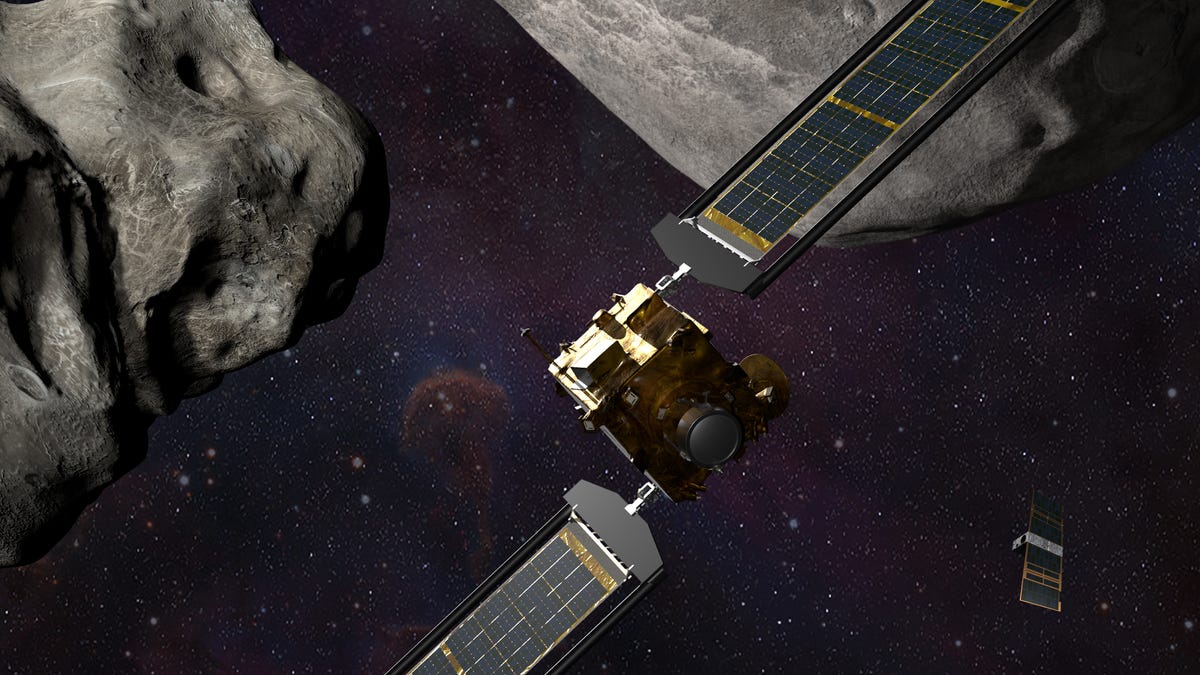Watch NASA talk up its wild asteroid-bashing DART mission
The Double Asteroid Redirection Test is set to launch this month as a trailblazing planetary defense mission.

This illustration shows the main DART spacecraft with a smaller CubeSat that will witness the crash test.
Hazardous asteroids have impacted Earth in the past, and we should be concerned about potential future threats. That's why NASA is launching the Double Asteroid Redirection Test mission as early as Nov. 23. The space agency previewed its plans for DART in a briefing on Thursday.
You can catch all the briefing highlights and get caught up on the basics of this ambitious mission right here:
DART sounds like part of the plot to a sci-fi movie. "As a technology test, the mission will help determine if intentionally crashing a spacecraft into an asteroid is an effective way to change its course, should an Earth-threatening asteroid be discovered in the future," NASA said in a statement on Tuesday. "DART's target asteroid is not a threat to Earth."
The mission's destination is actually a pair of space rocks. Larger asteroid Didymos is orbited by a small moonlet named Dimorphos. In late 2022, DART will smash into the moonlet to try to change its orbit around its bigger buddy. If that works, it could offer a blueprint for redirecting potentially dangerous asteroids away from Earth.
The DART team on the briefing discussed some of the uncertainties of the mission. Scientists don't know what exactly Dimorphos looks like. It could be rocky or uneven or strewn with boulders. A briefcase-sized CubeSat spacecraft is going along for the ride and will be deployed to document the action as DART smooshes itself into the moonlet.
Telescopes will handle most of the follow-up work on the mission by looking for changes in the orbit of Dimorphos around Didymos. DART coordination lead Nancy Chabot said the moonlet's current orbit takes 11 hours and 55 minutes. A good impact from DART could shave 10 minutes off of that.
SpaceX is set to escort DART off this planet with a Falcon 9 rocket launching from Vandenberg Air Force Base in California. While it could take off as soon as Nov. 23, the mission has a long launch window and could leave as late as mid-February 2022.
The good news is we don't know of any imminent asteroid threats to Earth, though they sometimes sneak up on us. That means we should have some breathing room before we might have to try a DART-like mission for real.

